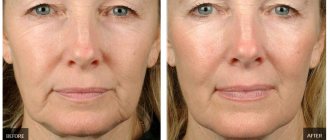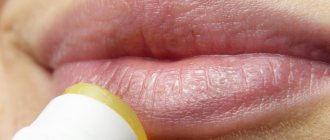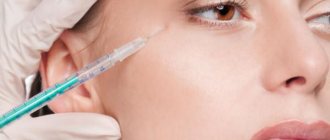Department of Reconstructive and Plastic Surgery
Doctors of the Department of Reconstructive and Plastic Surgery of the Central Clinical Hospital of the Russian Academy of Sciences provide assistance to patients with aesthetic defects in appearance, age-related and physiological changes in the soft tissues of the face and body: deformities of the face, nose, mammary glands, anterior abdominal wall, limbs in order to restore lost aesthetic proportions of appearance and improve quality of life of patients.
They also help patients with various diseases and consequences of injuries to the hand and forearm, damage to peripheral nerves, and patients in need of various reconstructive and plastic surgeries. Help is provided with the aim of restoring lost functions, replenishing tissue defects and improving the quality of life of patients.
The head of the department is Evgeniy Valerievich Molochkov, plastic surgeon, Candidate of Medical Sciences, work experience since 1997.
Plastic surgeon of the highest category Irina Vladimirovna Kuzmina, work experience since 1998.
Plastic surgeon Alexander Vyacheslavovich Lebedev, work experience since 1996.
Plastic surgeon Nikolai Viktorovich Sanyukovich, work experience since 2013.
All employees of the department constantly improve their knowledge and skills at Russian and foreign congresses in the specialty of plastic surgery, take part in master classes and “live surgery” courses, which contributes to the highest quality medical care in the field of plastic surgery.
in the Department of Reconstructive and Plastic Surgery :
Plastic:
- breast augmentation (enlargement mammoplasty);
- breast lift (mastopexy);
- reduction mammoplasty;
- SMAS plastic surgery of the face and neck;
- frontotemporal lifting;
- endoscopic frontotemporal lifting;
- eyelid plastic surgery (upper, lower, transconjunctival and circular blepharoplasty);
- nose surgery (rhinoplasty);
- plastic surgery of the ears (otoplasty);
- lip plastic surgery (cheiloplasty, bullhorn);
- plastic surgery of the anterior abdominal wall (abdomenoplasty, miniabdomenoplasty);
- body contouring (liposuction, lipofilling);
- combined, combined and simultaneous plastic surgeries;
- phlebeurysm;
Hand microsurgery:
- tunnel syndromes (carpal, cubital, guyon tunnel syndrome, etc.)
- Dupuytren's contracture;
- consequences of tendon damage;
- consequences of damage to the peripheral nerves of the upper limb;
- consequences of joint damage;
- hand tissue defects;
- stenosing ligamentitis (“snapping finger”);
- removal of hand tumors;
- removal of foreign bodies of the hand;
- hygromas;
- joint arthroplasty.
State Center for Plastic Surgery named after. I.I.Dzhanelidze
Permanent makeup (tattoo) is a cosmetic tattoo. When applied, organic paint is introduced into the upper subcutaneous layer, which lasts for 3-5 years. The inks used for tattooing are mineral-based and do not cause allergic reactions.
The advantages of permanent makeup over daily application of cosmetics are obvious. With the help of tattooing, you can correct the shape of your lips and eyebrows, give them clear lines, and correct uneven or blurred contours. You can raise your eyebrows, make your lip line smoother and brighter, and correct existing facial imperfections, such as asymmetry.
Before going on vacation, many girls do permanent makeup so that when they are away from home, they forget about what cosmetics are, while looking every day like in a picture in a fashion magazine. There is a significant saving of time, because you don’t need to spend half an hour or an hour in front of the mirror every morning to put on makeup. Your face will not be afraid of rain, sauna and swimming pool, your makeup will not wash off, and you will not have to worry about having to touch up your makeup during the day. You will also save on cosmetics, because painting your face will allow you not to spend money on additional products.
A tattoo can be so invisible that no one will realize that it is on your face. You can tattoo your lips, eyelids, eyebrows and even nipple areolas. Some girls decide to make themselves an artificial mole that will look cute on their face. Another advantage of permanent makeup: it does not clog pores, unlike cosmetics, the skin of the face breathes and is not irritated.
Using a needle, a special dye is injected into the upper layers of the skin along a pre-drawn line. The tattoo procedure lasts 1-2 hours and does not cause any discomfort, since an anesthetic gel is applied to the treated areas or anesthesia is administered.
After the procedure, the skin swells a little and turns red. You will have to wait a few days until the redness and swelling subside. But then you will enjoy for several years the ideal clarity and evenness of the lines, which will make your face more graceful.
If necessary, you can get rid of the tattoo. This is done using a laser, which leaves no traces. If you have received a low-quality tattoo, in a few sessions you will be rid of it, and your face will again have natural colors. ...
Contraindications for aesthetic plastic surgery are:
- oncological diseases;
- connective tissue diseases;
- blood clotting disorder;
- scleroderma;
- pregnancy and lactation;
- any diseases of internal organs
In addition, approximately one month before the aesthetic plastic surgery procedure, the patient should :
- quit smoking and increase physical activity to strengthen your cardiovascular system;
- switch to proper nutrition and take a course of vitamins. This will strengthen the body, improve metabolic processes in the skin, which will speed up recovery processes in the body.
- cleanse the intestines within a few days, and on the day of the operation, eating and drinking is completely prohibited.
Of course, the success of the operation depends not only on preparation, but primarily on the professionalism of the surgeon, the equipment and instruments used. Therefore, at the first consultation, try to ask as many questions as possible to the plastic surgeon in order to have a clear idea of the upcoming operation:
- about his experience in plastic surgery and the number of operations performed in the current year;
- about the availability of a qualification category and relevant education;
- ask for his medical portfolio to review;
- whether a legal agreement between the parties is formalized;
- who will provide assistance in case of complications;
Plastic surgeon
Plastic surgery
is a branch of surgery that deals with surgical interventions,
aimed at restoring the form and function of any organ,
tissue or modified surface of the human body.
Today, beauty is not just a matter of genes.
Over the past few years, cosmetic interventions and surgical technologies have become increasingly widespread and successful.
Here are some types of plastic surgery that are considered the most commonly performed:
- Facial plastic surgery
- Nose job
- Eyelid surgery
- Ear plastic surgery (Otoplasty)
- Abdominoplasty
- Scar surgery
- Breast surgery
- Liposculpture
- Intimate Plastic
What needs to be done so that the operation is successful and you can get exactly the result from plastic surgery that you expected?
You should definitely discuss with your doctor all the nuances associated with plastic surgery - what is right for you, when is the best time to perform the operation, how long will the recovery period take, possible post-operative complications. The more informed you are, the easier it is to plan your schedule after surgery, and the fewer surprises you may encounter.
It is not at all necessary to decide on the timing of plastic surgery at the first consultation. Some aspects of what the surgeon suggests may not coincide with your ideas. You may need time to think and make a final decision - when and what to do.
Contraindications for surgery:
- ARVI
- Exacerbation of chronic somatic diseases
- Diabetes
- Blood coagulation disorders
- Endocrine and oncological diseases
Once the day of surgery has been set, it is necessary to select a time for the preoperative examination. The examination is usually carried out 5-7 days before surgery. The list of laboratory and instrumental studies depends on what operation you will undergo and may vary depending on the type of anesthesia.
The list of studies for performing surgery under general anesthesia includes a set of laboratory and instrumental studies:
- clinical blood test + platelets
- clotting time and bleeding duration
- biochemical blood test (total protein, urea, creatinine, blood sugar, bilirubin, AST, ALT)
- coagulogram (hemostasis studies, include prothrombin time (PTI), APTT, fibrinogen)
- blood type and Rh factor
- general urine test
- HIV blood test
- blood test for RW
- blood test for HCV, HBS ag - hepatitis B and C
- ECG
- fluorography (valid for 12 months)
- physician’s conclusion about the state of health and the absence of contraindications to the operation
The results of general and clinical blood tests and a general urine test are valid for 10 days, the results of blood tests for viral hepatitis, HIV, RW are valid for 1 month.
Attention! When preparing for a breast augmentation, breast lift or reduction mammoplasty operation, it is necessary to perform an ultrasound of the mammary glands and undergo an examination by a mammologist.
It is strictly prohibited to take aspirin and aspirin-containing medications less than 2 weeks before surgery. Taking all medications before surgery should be agreed with your doctor.
Make an appointment +7(812)-92-038-92 , +7(911)-713-60-00
You can email the doctor at [email protected]
Plastic surgeons
- home
- Consultations
- Plastic surgeons
Ask a question (open a new topic)
Show topics:
Shelli1986 09.10
Please tell me, the cesarean suture is crooked and pulled, and a bead has also formed, is it possible to lower the suture a little lower?
Olgun 09.10
Dear surgeons! I have three weeks after the OP, re-endoprosthetics and T-mastopexy, my left breast is swollen, enlarged, aching. During a remote examination, the doctor saw no reason for concern. I have been wearing strips since the day of the OP, today I discovered at the junction of the stitches of the left breast, darkening and a slight discharge amount of ichor. I treat it with alcohol through a strip, wear a compression wrap. Is there any cause for concern or is the release of ichor at this stage normal?
LusySerdaboliya 08.10
Good afternoon I had otoplasty surgery 2 years ago, the doctor said that the imperfections would go away with time, tell me, is it possible to correct these scars somehow?
Svetik 16 07.10
Svetik 16 07.10
Hello! Two months passed after the circular blepharoplasty. A month later, an epicanthus formed, the doctor made an incision with a laser. After this, the scar became wider, the epicanthus remained. At home I use Fermekol gel, but I don’t see any results. Please tell me what treatment options or repeat surgery are there?
Svetik 16 07.10
Hello! Two months passed after circular blepharoplasty. A month after the operation, an epicanthus formed. During the consultation, the doctor suggested making incisions. I want to hear your advice. Will there be any results or will a repeat operation be needed in 6 months? Maybe polish the scar or inject a drug?
tatwol 06.10
Please someone answer! Beg! And so I had rhinoplasty 2 years ago, after 6 months my nose stopped hearing, they examined me and found that the septum was crooked and the nasal turbinates needed to be reduced. An operation was scheduled. Now the question is: how will correcting the septum and this operation itself affect the nose after rhinoplasty? Are all the cartilage workers there operated on? Will they be stretched now? And the nose will lose its shape? Thank you
VikTory20 05.10
VikTory20 05.10
Alla00 04.10
Good day!
I am 26 years old.
I did Dysport. The eyebrows did not rise, maybe even lower than steel, or so it seems to me. They don’t move, the wrinkle on the forehead has disappeared. A week has passed... I understand there is nothing more to wait for. But I want my eyebrows higher to make my eyes look kinder. What advice could you give me?
I went to a diode laser for facial contours once, and I plan to go to this procedure several more times. Will it help?
The photo shows what you have and what you want. Not against plastic surgery, but only for it.
Thanks a lot.
Transconjunctival blepharoplasty
— The operation allows you to get rid of bags under the eyes. Usually suitable for patients 25-40 years old.
Who is it suitable for: for those who suffer from puffiness or dark circles under the eyes, and therapy or cosmetic methods cannot solve the problem.
How it is done: the operation is performed without an external skin incision, under intravenous sedation.
When the result is visible: individually. But in the evening after the operation the patient can leave the clinic.
How can a plastic surgeon reduce the risk of being blacklisted?
If everything more or less falls into place when it comes to patients, then how can a plastic surgeon protect himself from a patient who, in principle, is already determined not to fail? First of all, a plastic surgeon must be a subtle psychologist in order to grasp the line where a complex about a hump on the nose turns into a mental deviation and more obsessive than a state of complete dissatisfaction with one’s appearance. Such patients do not require plastic correction of appearance, but a course of psychotherapy aimed at identifying the cause of the development of this mental state. It should be understood that plastic surgery will only eliminate the superficial causes of the patient’s irritation. Although the true reasons may lie elsewhere: incorrect perception of the outside world, childhood grievances, disappointments in personal life, etc.
Liporeduction of the submental zone (double chin liposuction)
— There are different methods of double chin liposuction, both the simplest (tissue separation and fat removal with a syringe), and more modern ones using devices (Vaser, Face tite). If there are indications, the operation can be performed at a fairly young age—25-30 years. Liposuction is often complemented by the subsequent installation of surgical threads to lift the lower third of the face.
Suitable for: Those who want a perfect chin contour.
How it is done: the operation is performed under local anesthesia or sedation and lasts about 1 hour. When results are visible: at least in a week. For the first day after surgery, you should wear a special mask that supports the chin area, and the rehabilitation period takes about seven days.
A type of cheiloplasty, Bullhorn surgery (bull horns)
— An operation that reduces the distance between the upper lip and nose.
Who is it suitable for: those who want to improve the shape of the upper lip, change its size and emphasize contours. Most often these are girls who:
- asymmetrical or receding upper lip; thin and narrow upper lip;
- large distance between the nose and upper lip,
— there is a trace of injury, or plastic surgery with fillers is impossible, or does not give the desired effect.
How it is done: the operation is performed under sedation, an incision is made, part of the subcutaneous fat under the nose is excised and the upper lip is lifted up.
When results are visible: at least in a week. In the first days after surgery, there will be slight swelling and redness. After 3-5 days this goes away, and suture removal is usually scheduled after a week. Until this moment, it is prohibited to use decorative cosmetics or peel lips.











